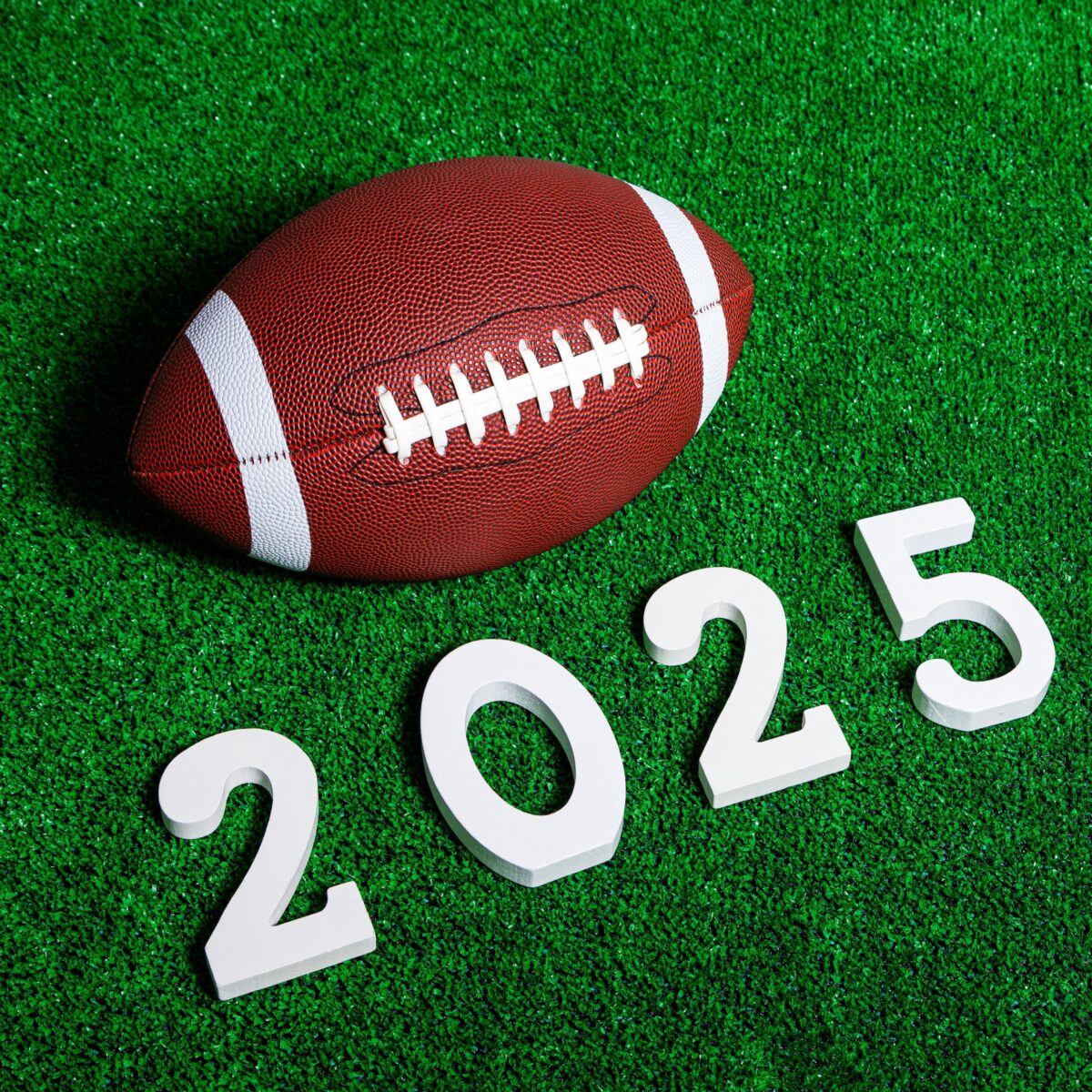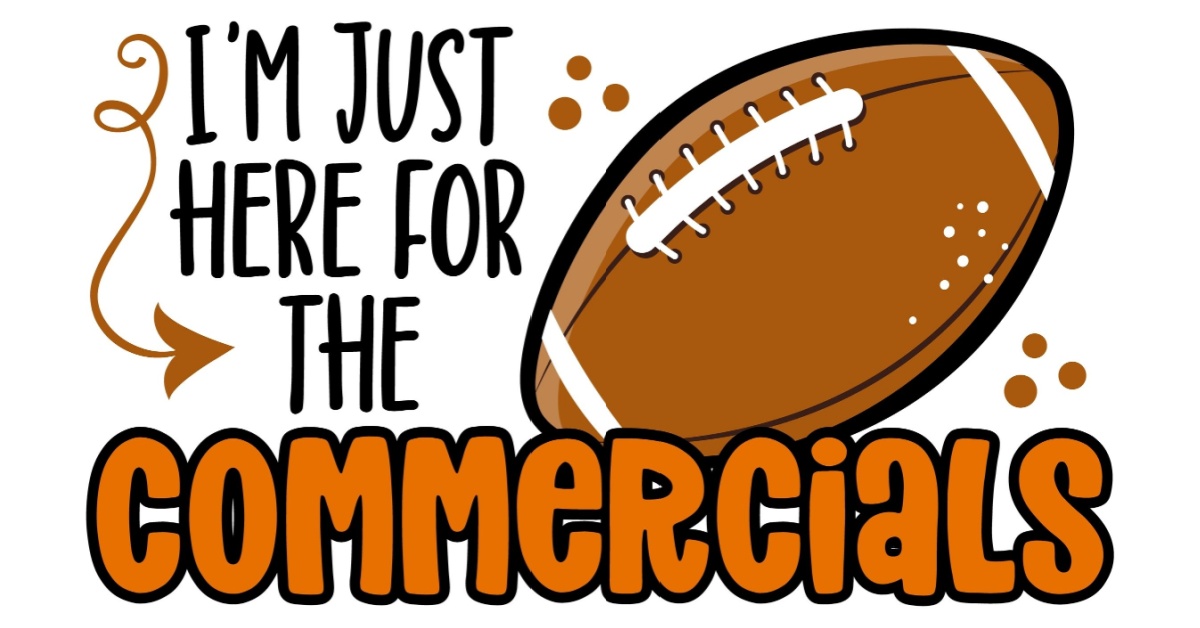
Nike Aired Its First Super Bowl Ad in 27 Years — And It’s ALL Women.
Nike came in HOT for Super Bowl LIX, dropping a game-changing ad composed of all iconic women in sports and narrated by recent Grammy award-winning rapper, Doechii. I was only half paying attention to the game, but I was immediately locked in once this ad began. Nike has been around since 1971, and actually even a few years before that, formerly known as Blue Ribbon Sports, and at this point is considered a household name, so why debut a big game ad NOW after almost a 3 decade hiatus?
Stellar Line Up
Nike gave the stage to women on a day where only men play on the field. The ad showed a montage of female athletes, like WNBA powerhouses Caitlin Clark, A’ja Wilson and Sabrina Ionescu, Olympic gold medalist gymnast Jordan Chiles, track and field star Sha’Carri Richardson, footballer Alexia Putellas, and current world No. 1 tennis pro, Aryna Sabalenka. The 60 second masterpiece addresses the list of double-standards that women are constantly being told, but on screen, are proving critics wrong. Showing these women in their element, doing what they do best, and WINNING, was a great way to visually hit the emotional nerve of women everywhere that can relate. Imagine being told you shouldn’t be doing something, or worse, that you CAN’T do it — men don’t know what that feels like. This goes beyond sports.
Something to Prove
So after 27 years, why now? Nicole Hubbard Graham, the brand’s Chief Marketing Officer, says they wanted to tap into one of the few mass cultural experiences we have left. Nike isn’t a stranger to advertising during the Super Bowl, but in recent years, women are flipping the script and there is no better time than now to show their stories. “Women are just absolutely shattering records right now, selling out stadiums, ticket sales, commanding contracts like you’ve never seen before, and being placed with probably some of the harshest expectations of how you’re supposed to act. And I think they will redefine what it means to be athletes and personalities of the future.”, says Graham.
Basically, it’s two middle fingers. One to the critics of women, and the other to the critics of the brand and its relevance. According to Fast Company, this ad was actually the kick off to their new campaign that will continue into this year as the brand tries to reconnect with athletes the same way they did in the past, by using big, irreverent, disruptive, and emotional ideas. Their vision is athletes over algorithms.
So Win
The overarching theme for this ad is simple, its comeback season.
For Nike as it gains new competitors like Hoka and On Cloud, on top of their existing players like Adidas and Brooks, and as the brand battles declining stock (last summer saw its biggest drop since 2001).
For female athletes, who are securing record-breaking contracts and proving their worth on the world stage.
And for women all around the world being told they can’t.
Do it, and do it LOUD! Win on your terms.

Michelob Ultra’s ‘The Ultra Hustle’ Ad: Pickleball, Beer, and the Ultimate Sneaky Hustle
If you haven’t seen Michelob Ultra’s “The Ultra Hustle” yet, stop what you’re doing and go watch it. Seriously. This ad has everything: Catherine O’Hara, Willem Dafoe, pickleball, and the sneakiest, most conniving beer hustle you’ll ever witness. It’s funny, unexpected, and a total win in the world of advertising. Let’s talk about why this commercial works so well—and why we’re still thinking about it.
1. Catherine O’Hara and Willem Dafoe Are the MVPs
First of all, whoever decided to cast Schitt’s Creek legend Catherine O’Hara and the always-intense, something of a genius himself, Willem Dafoe, deserves a raise. These two have kooky chemistry for days, and their dead-serious, shark-eyed approach to hustling people on the pickleball court is chef’s kiss.
O’Hara brings her signature dry wit, and Dafoe’s intense, almost menacing energy somehow makes the whole thing even funnier. Seeing him apply that Green Goblin-level focus to pickleball? Pure gold.
2. Pickleball + Beer = A Match Made in Heaven
Pickleball is having a moment, and Michelob Ultra nailed the timing. By tapping into a sport that’s blown up in popularity, the ad instantly feels relevant & cheesy in all the right ways. But instead of just slapping some pickleball scenes together, they took it a step further—turning the game into a full-blown hustle.
The premise is simple: O’Hara and Dafoe hustle unsuspecting players for their Michelob Ultras. And honestly, who wouldn’t trade a game of pickleball for a cold beer? It’s relatable and ridiculous all at once.
3. The Humor Is Low-Key Hilarious
This isn’t in-your-face slapstick humor; it’s subtle and perfectly timed. The best part? The ad takes itself just seriously enough to make the joke land. O’Hara and Dafoe play their roles like seasoned pool sharks—except with paddles and pickleballs—while their opponents remain blissfully unaware, and honestly a little judgmental (something something don’t judge a book by its cover).
It’s that perfect balance of “Wait, are they really doing this?” and “Oh my God, they are.” The kind of humor that sticks with you and makes you chuckle later when you’re thinking about it.
4. High-Quality, but Not Over the Top
One reason this ad works so well is that it’s polished without feeling overproduced. The pacing is tight, the visuals are crisp, and the vibe is just… cool. Cold beer on a hot day cool, obviously.
The whole thing feels intentional, but not in a trying-too-hard way. It knows what it is—a fun, lighthearted ad that doesn’t take itself too seriously.
5. The Perfect Product Tie-In
And let’s not forget the beer! Michelob Ultra, the third main character in the commercial, weaves itself into the story so naturally. It’s not, “LOOK AT OUR BEER!” It’s more like, “Oh, hey, yeah, this is just what cool people drink when they’re done hustling pickleball.”
By the end of the ad, you’re not just craving a cold Michelob Ultra—you’re also kind of wondering if you should dust off your paddle and hit the court.
The Takeaway
Michelob Ultra’s “The Ultra Hustle” is a welcome reminder that advertising doesn’t have to be complicated to be effective. A great concept, the right talent, and a dash of humor can go a long way. It’s funny, clever, and totally on-brand—proof that ads don’t need to scream to be heard loud and clear.
So, the next time you’re thinking about how to promote your brand, take a page from Michelob Ultra’s playbook: keep it light, keep it fun, and maybe throw in a little pickleball, and a lot of personality.
In (what we assume would be) the words of the iconic Moira Rose: Darlings, are you yearning for an advertising campaign that exudes charisma, uniqueness, and the kind of je ne sais quoi that leaves audiences utterly enchanted? Allow Mad Men Marketing to be your guiding light. Together, we shall craft something fabulously memorable—a pièce de résistance that will have them talking for ages. Now, off you go! Contact us posthaste. 💫

Evaluating the Best Super Bowl Ads of 2025
The Super Bowl is more than just a championship football game—it’s the grand stage for the most anticipated advertisements of the year. In 2025, the best ads were front-loaded in the first half, which, given the tough loss suffered by the Kansas City Chiefs against the Philadelphia Eagles, was probably a good thing for viewers looking for some lighthearted entertainment.
Before diving into my top pick, here’s a quick rundown of a few standout commercials that deserve an honorable mention:
- Ritz Crackers featuring Aubrey Plaza (and friends) – A quirky, star-studded ad that brought humor and charm.
- Stand Up to Hate with Snoop Dogg and Tom Brady – This ad was in my top three for its strong message and creativity, punctuated perfectly by Snoop’s delivery at the end.
- WeatherTech’s Old Ladies – If Liquid Death can make water exciting, WeatherTech made rubber floor mats amusing in an unexpected way.
- Ram Trucks’ Goldilocks – A testosterone-fueled reimagining of the classic children’s tale, blending ruggedness with nostalgia.
- Angel Soft’s Bathroom Break – A clever, well-timed spot that capitalized on a natural Super Bowl moment.
- Post Malone’s Bud Light Cul-de-Sac Party – Another entry in the Bud Light playbook that delivered good vibes and brand recognition.
- MSC Cruises with Drew Barrymore and Orlando Bloom – Highlighting the cultural divide between the U.S. and England with humor and elegance.
- Super Boston Dunkin’ Ad – Ben Affleck’s return to Dunkin’ was packed with heavy Boston accents and familiar faces, making for a crowd-pleasing hit.
My Favorite Ad of the Night
The standout ad for me was Meta’s collaboration with Ray-Ban, featuring their new smart glasses. The commercial kicked off with Chris Pratt using the Meta AI within the glasses to inquire about some artwork he’s observing—a banana duct-taped to a wall. The AI informs him that the piece is valued at $6.2 million.
The scene then shifts to Chris Hemsworth, who is casually eating the infamous banana. Though he’s also wearing the Meta glasses, he doesn’t seem to be using them—though, let’s face it, he can make anything look stylish. Pratt, in shock, exclaims, “That’s a 6.2 million dollar banana!” to which Hemsworth replies, “Are you kidding?”
Their ensuing scramble to replace the banana leads them to a sleek, well-stocked refrigerator, revealing that they are actually inside a private collection rather than a museum. Enter Kris Jenner, the art’s owner, who sternly asks, “Who eats art?!” In an attempt to deflect, Pratt and Hemsworth bumble their way into demonstrating the AI’s functionality: “I think you’re supposed to say, ‘Hey Meta, who eats art?’ and then Meta would say Chris Pratt,” as Pratt points at a Hemsworth in shock. The ad closes with Jenner deadpanning, “Hey Meta, call my lawyer,” before the Meta and Ray-Ban logos appear, along with the glasses’ $299 starting price.
Why This Ad Stood Out
This commercial wasn’t just funny and packed with pop-culture relevance; it showcased a product that could genuinely change consumer technology in a meaningful way. Much like the rise of smartwatches, these AI-powered glasses have the potential to redefine how we capture and interact with the world around us.
For younger generations who document their lives on social media, or for influencers who rely on seamless content creation, these glasses streamline photography, video recording, and AI-driven assistance. The ability to take natural, unobstructed mirror selfies, capture videos effortlessly, and receive instant answers makes them a game-changer. Given their stylish design, reasonable price, and practical functionality, these smart glasses could become a major hit in the wearable tech industry for years to come.
Elevate Your Brand with Mad Men Marketing
Super Bowl ads prove time and time again that great storytelling, creativity, and cultural relevance drive brand success. If you want to make an impact with your advertising, whether it’s through engaging digital campaigns, compelling TV spots, or innovative branding strategies, Mad Men Marketing can help. We specialize in crafting powerful, results-driven marketing campaigns that resonate with audiences and elevate brands to the next level.
Let’s create something unforgettable together. Contact us today to start shaping the future of your brand’s advertising strategy.

How Many Ad Creatives Are Needed for a Successful Social Media Campaign?
1. Preventing Ad Fatigue
Ad fatigue arises when users repeatedly see the same creative and begin to overlook it. When this happens, performance can decline, and costs often escalate.
- Frequency Awareness: Most social platforms provide frequency metrics to indicate how many times each user sees a specific ad. Performance tends to drop once this metric exceeds certain levels.
- Rotational Approach: Rotating various ad creatives helps keep content fresh and engaging, leading to improved long-term impact.
Practical Tip: Launch campaigns with at least three or four distinct ad variations to maintain audience interest and minimize the risk of burnout.
2. Enabling Effective Testing and Optimization
Multiple ad creatives allow for more robust testing to discover which elements resonate best with the intended audience. These data-driven insights foster continual improvement.
- A/B and Multivariate Testing: Testing different headlines, visuals, and calls to action provides clarity on the specific combinations that lead to higher engagement or conversions.
- Ongoing Refinement: Once the most successful variations are identified, redirect budgets toward those creatives while refining or removing weaker performers.
Practical Tip: Employ a structured testing framework. Launch two to three creatives for each audience subset, measure performance (e.g., CPC, CTR, conversion rate), and refine the campaign according to the results.
3. Connecting with Diverse Audience Segments
Target audiences can exhibit a wide range of interests, pain points, and preferences—even when they share a core demographic profile. Multiple creatives help address these differences more precisely.
- Personalized Messaging: Ads that mirror specific audience challenges or aspirations stand out in busy news feeds.
- Regional Adaptations: Cultural and regional nuances may call for distinct imagery or references to resonate more effectively.
- Persona-Focused Strategies: In-depth personas clarify each segment’s motivations, enabling more targeted ad copy and visuals.
Practical Tip: Create at least one or two unique creatives per persona or audience subset. Align visuals and messaging with the values and lifestyles that each group holds.
4. Showcasing Variety While Upholding Brand Identity
A common concern is that multiple variations might dilute a brand’s image. Adhering to established brand elements ensures consistency, even with diverse creative approaches.
- Unified Design Elements: Consistent brand colors, fonts, and logos help maintain a cohesive style.
- Varied Formats: Introduce different formats—such as short videos, carousels, static images, or user-generated content—to cater to diverse viewer preferences.
- Reusing Winning Assets: High-performing visuals or videos can be repurposed with fresh headlines and captions to extend their lifecycle while keeping content engaging.
Practical Tip: Craft a detailed brand style guide and distribute it to team members. Encourage creative experimentation within brand guidelines for a balance of consistency and variety.
5. Allocating Budget for Multiple Ad Creatives
While producing multiple variations can demand a higher initial investment, it often results in stronger long-term performance and returns on ad spend.
- Dedicated Testing Budget: Setting aside 10–20% of the advertising budget for testing enables efficient identification of the most effective creatives.
- Scaling Up Winners: Once top performers are found, allocate additional resources to those creatives and refine or pause underperforming ones.
Practical Tip: Begin with a modest but diverse pool of creatives, analyze performance indicators closely, and increase spending on ads that yield the best results.
6. Identifying the Sweet Spot
Although a fixed number of creatives does not apply to every scenario, the following suggestions can guide campaign planning:
- Three to Four Variations per Segment: This range generally provides enough diversity to combat ad fatigue and gather actionable insights.
- At Least Two Formats: Incorporating both static images and videos can capture broader audience attention and encourage higher engagement.
Just as offering different menu items at a dinner party ensures every guest finds something to enjoy, providing multiple ad creatives caters to a wider range of user preferences. Consistent updates, strategic testing, and data-driven optimization can help ensure each campaign remains relevant and cost-effective.
Conclusion
Variety in social media advertising is more than a recommendation—it is a proven path to better engagement, reduced ad fatigue, and deeper audience insights. Mad Men Marketing’s approach underscores the importance of using multiple creatives to stay competitive in an increasingly crowded digital marketplace. By developing diverse ads, regularly testing performance, and refining campaigns based on data, brands can maximize their impact across platforms.
Ready to elevate your social media campaigns with high-performing ad creatives?
Contact us to discuss customized strategies for reaching and engaging your target audience.

Placing Amazon Video Ads: A Step-by-Step Guide
In today’s digital age, video advertising has become one of the most effective ways to reach potential customers. With millions of daily active users, Amazon offers a unique platform for advertisers to reach a highly engaged audience. Whether you’re a seasoned marketer or new to Amazon’s advertising ecosystem, placing video ads on Amazon can significantly boost your brand’s visibility and sales. Here’s a comprehensive guide to help you get started.
Why Choose Amazon for Video Advertising?
Amazon isn’t just an e-commerce giant; it’s a massive advertising platform with a wealth of data that can help you target your ideal audience and enhance your funnel. Video ads on Amazon are highly effective because they appear across multiple touchpoints, including search results, product detail pages, and even on Amazon devices like Fire TV and a multitude of streaming platforms. This multi-faceted approach allows you to reach customers at various stages of their shopping journey.
Step 1: Set Up Your Amazon Advertising Account
Before you can start placing ads, you need to set up an Amazon Advertising account. If you already sell products on Amazon, you likely have access to this through your Seller Central or Vendor Central account. If not, you can create an account directly on the Amazon Advertising website.
- Visit advertising.amazon.com.
- Click on “Register” and follow the steps to create your account.
- Fill in your business information, verify your account, and you’re good to go.
Step 2: Understand the Types of Video Ads Available
Amazon offers several types of video ads, each designed to serve different marketing objectives:
- Sponsored Brands Video: These appear in shopping results and are ideal for driving traffic to your product pages.
- OTT (Over-the-Top) Video Ads: These ads are displayed on streaming platforms, such as Fire TV, reaching viewers while they watch shows or movies.
- Amazon DSP (Demand Side Platform) Video Ads: These allow you to programmatically buy video ads across Amazon-owned properties and third-party websites. For now, a very select group of companies with large ad spends have access to the DSP. You can also get access, but you have to give the company providing access a percentage of ad spend. There is also a business background check involved. If you’re a small business or a single individual, this is likely not the path you’ll take.
Understanding which ad format suits your business goals is crucial for maximizing your ROI.
Step 3: Create Compelling Video Content
Your video content is the heart of your ad. To capture attention, your video should be engaging, concise, and tailored to your audience. Here are some tips:
- Keep it Short and Sweet: Amazon recommends keeping videos between 15 to 30 seconds long.
- Grab Attention Early: Hook viewers within the first few seconds with a strong visual or message.
- Highlight the Product: Make sure your product is front and center. Show it in use, highlight key features, and include a clear call to action.
Step 4: Set Up Your Campaign
Once your video is ready, it’s time to set up your campaign. Here’s how:
- Choose the Right Ad Type: Go to your Amazon Advertising account, click on “Create Campaign,” and select the type of video ad you want to run.
- Define Your Audience: Amazon allows you to target based on demographics, interests, purchasing behaviors, and more. Use this data to narrow down your audience.
- Set Your Budget and Bids: Decide how much you’re willing to spend on your campaign. Amazon’s bidding system will allow you to set a daily budget and bid per click or impression.
- Upload Your Video: Ensure your video meets Amazon’s specifications. For Sponsored Brands Video, the recommended aspect ratio is 16:9, and the maximum file size is 500MB.
- Launch and Monitor: Once your campaign is live, regularly monitor its performance. Use Amazon’s reporting tools to track metrics like views, clicks, and conversions.
Step 5: Optimize Your Video Ads
Successful advertising on Amazon doesn’t stop at launch. To get the best results, you need to continuously optimize your ads. Here’s how:
- A/B Testing: Test different versions of your video to see which performs best.
- Refine Targeting: Use performance data to tweak your audience targeting.
- Adjust Bids: Increase bids on high-performing placements and reduce them on underperforming ones.
- Monitor ROI: Keep an eye on your return on ad spend (ROAS) to ensure your campaign is profitable.
Conclusion
Advertising on Amazon with video can be a game-changer for your brand, driving increased visibility and sales. By following these steps, you can effectively create, launch, and optimize your video ads, reaching the right audience at the right time. At Mad Men Marketing, we specialize in helping brands navigate the complexities of digital advertising platforms like Amazon. Ready to take your video ads to the next level? Contact us today to learn more about our tailored advertising solutions.


